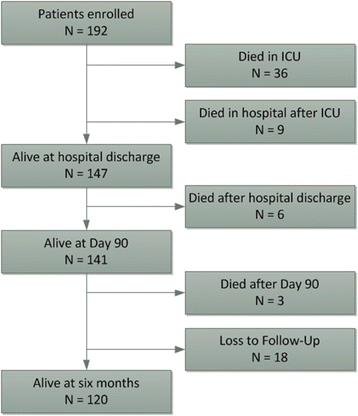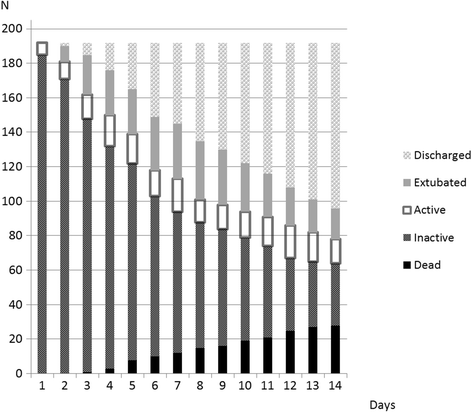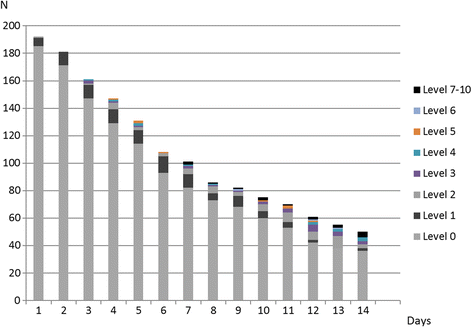Early mobilization and recovery in mechanically ventilated patients in the ICU: a bi-national, multi-centre, prospective cohort study
- PMID: 25715872
- PMCID: PMC4342087
- DOI: 10.1186/s13054-015-0765-4
Early mobilization and recovery in mechanically ventilated patients in the ICU: a bi-national, multi-centre, prospective cohort study
Abstract
Introduction: The aim of this study was to investigate current mobilization practice, strength at ICU discharge and functional recovery at 6 months among mechanically ventilated ICU patients.
Method: This was a prospective, multi-centre, cohort study conducted in twelve ICUs in Australia and New Zealand. Patients were previously functionally independent and expected to be ventilated for >48 hours. We measured mobilization during invasive ventilation, sedation depth using the Richmond Agitation and Sedation Scale (RASS), co-interventions, duration of mechanical ventilation, ICU-acquired weakness (ICUAW) at ICU discharge, mortality at day 90, and 6-month functional recovery including return to work.
Results: We studied 192 patients (mean age 58.1 ± 15.8 years; mean Acute Physiology and Chronic Health Evaluation (APACHE) (IQR) II score, 18.0 (14 to 24)). Mortality at day 90 was 26.6% (51/192). Over 1,351 study days, we collected information during 1,288 planned early mobilization episodes in patients on mechanical ventilation for the first 14 days or until extubation (whichever occurred first). We recorded the highest level of early mobilization. Despite the presence of dedicated physical therapy staff, no mobilization occurred in 1,079 (84%) of these episodes. Where mobilization occurred, the maximum levels of mobilization were exercises in bed (N = 94, 7%), standing at the bed side (N = 11, 0.9%) or walking (N = 26, 2%). On day three, all patients who were mobilized were mechanically ventilated via an endotracheal tube (N = 10), whereas by day five 50% of the patients mobilized were mechanically ventilated via a tracheostomy tube (N = 18).
Conclusions: Early mobilization of patients receiving mechanical ventilation was uncommon. More than 50% of patients discharged from the ICU had developed ICU-acquired weakness, which was associated with death between ICU discharge and day-90.
Clinical trial registration: ClinicalTrials.gov NCT01674608. Registered 14 August 2012.
Figures




References
Publication types
MeSH terms
Associated data
LinkOut - more resources
Full Text Sources
Other Literature Sources
Medical

